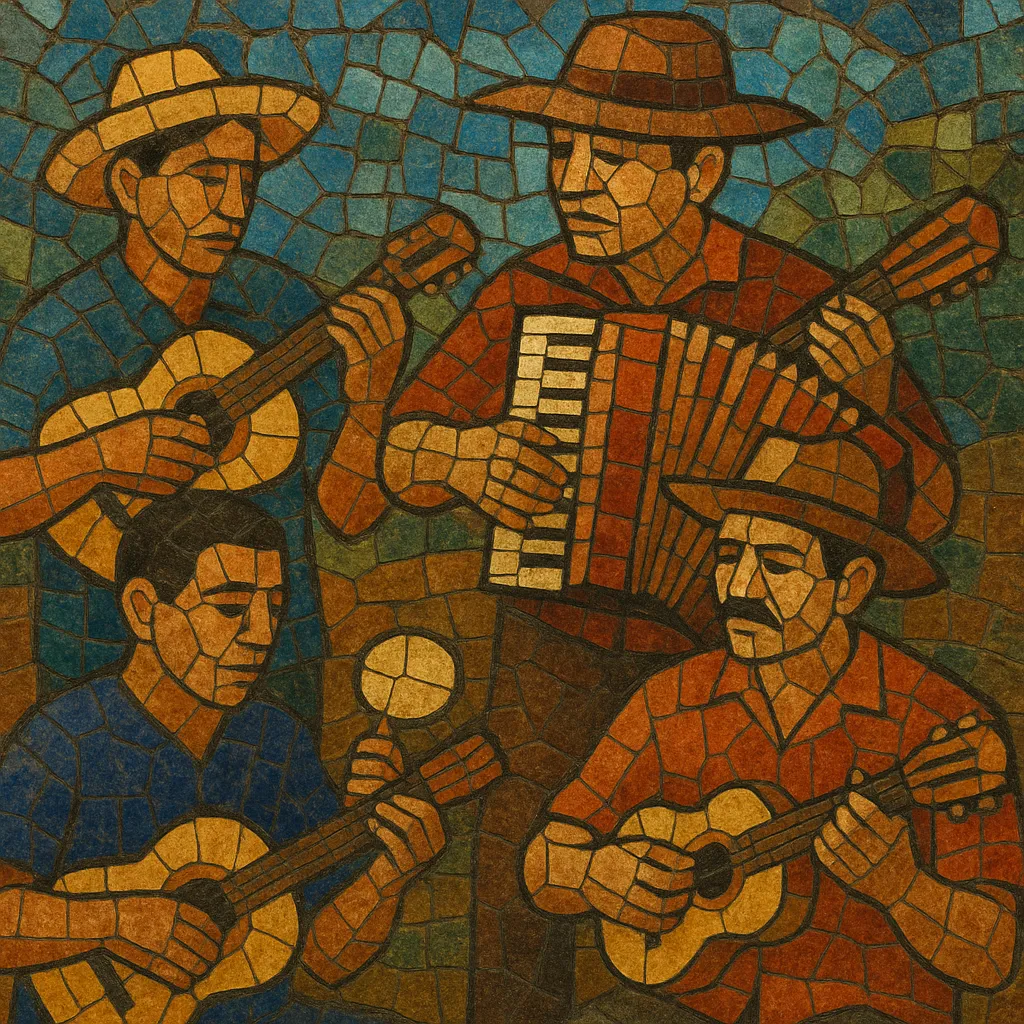Rasqueado cuiabano is a lively, dance-oriented popular style from the city of Cuiabá, in the Brazilian state of Mato Grosso. It blends the two-beat drive of regional polka-based dances with a distinctive, percussive guitar/viola caipira strumming technique known locally as the “rasqueado.”
Typical ensembles feature accordion (sanfona) carrying the melody, steel- or nylon‑string guitar and/or viola caipira executing vigorous strums and syncopations, bass outlining an “oom‑pah” pulse, and light hand percussion such as pandeiro, ganzá and reco‑reco. Songs often celebrate local life—Pantanal imagery, rivers like the Cuiabá and Coxipó, festas, heat, food, and humor—delivered in a convivial, call‑and‑response manner.
Harmonically it is simple and direct (I–IV–V with occasional borrowed chords), rhythmically buoyant (2/4 feel with off‑beat accents and anticipations), and designed for social dancing in community bailes.
Rasqueado cuiabano arose in mid‑20th‑century Cuiabá as urban and rural musicians fused borderland dance rhythms (notably polka and schottische) with the strummed guitar aesthetics of the Brazilian interior. Close cultural exchange with neighboring Paraguay and northern Argentina brought chamamé and other polka‑derived grooves into local parties, while the region’s own caipira/sertanejo practices and communal bailes shaped performance contexts and repertoire.
Through local radio, festas, and dance halls, the style consolidated a recognizable format: accordion‑led melodies, punchy “rasqueado” strumming, and narrative lyrics foregrounding Cuiabano identity. Community trios and conjuntos standardized arrangements and repertoire, making rasqueado a signature sound of the Baixada Cuiabana. Recordings and touring helped codify the groove and spread it to nearby regions.
While maintaining its core dance pulse and strumming identity, modern rasqueado cuiabano coexists with neighboring forms (siriri/cururu and various sertanejo currents). Cultural groups and local artists keep the tradition active in festivals, social dances, and cultural centers, and newer performers occasionally fold rasqueado textures into contemporary songwriting, ensuring the style’s continuity as both heritage and living practice.


